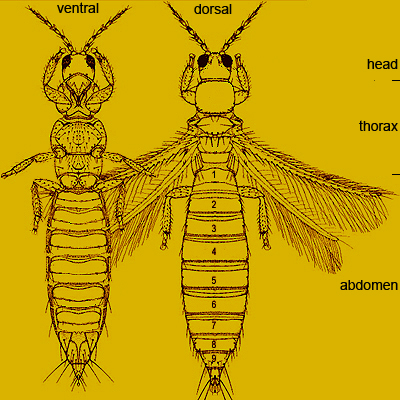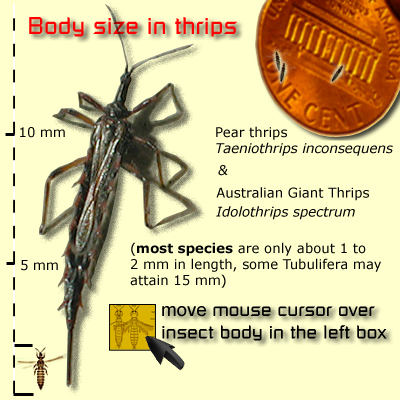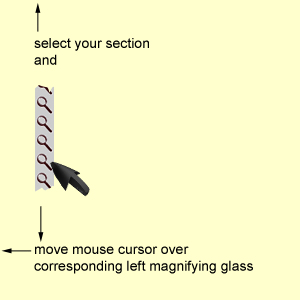| Particular attention is given to key characters, because it is essential that they be interpreted correctly. You can use additional photographs within the key when you are unsure of the character state discussed in the text. A double click on the character state thumbnail opens the related character state photograph and the mouse cursor will surround the important specific character state. | ||

|
 |
|
| (antecosta-campaniform
sensilla)
-> (cilia-craspedum) -> (cross
vein-furca) ->(gena-maxillary stylets)
-> (maxillary palps-ocellar setae) -> (ocellar triangle-posteroangular) -> (posteromarginal-setae) -> (spine-wing retaining setae) |
|
MAXILLARY
PALPS: Paired sensory appendages attached to the outer apical
surface of the stipes (part of maxilla). |
 |
MESONOTUM: Main
dorsal sclerite plate of the 2nd segment of thorax. |
||
MESOSTERNUM:
Main ventral sclerite plate of the 2nd segment of thorax. |
||
METANOTUM: Main
dorsal sclerite plate of the 3rd segment of thorax. craniale et caudale. |
||
METASTERNUM: Main
ventral sclerite plate of the 3rd segment of thorax. |
||
MICROTRICHIA:
Rigid projections from the cuticle surface without any nerve supply. |
||
MOUTH
CONE: The united parts of labrum, labium, galea and stipes,
which contain the stylets (laciniae and mandible). |
||
OCELLAR
SETAE: 2 or 3 pairs of setae are commonly found on the head in the region of the ocelli; pair 1 if present is in front of the fore ocellus; pair 2 arise laterally near the inner margin of the compound eyes; pair 3 varies in position but is often near the anterolateral margins of the ocellar triangle. |
Gordh, G & Headrick,
D (2001): A dictionary of Entomology. CABI Publishing, Oxon & New
York, 1032 pp. |
Gullan, PJ & Cranston,
PS (1994): The Insects: An Outline of Entomology . Chapman
and Hall, London. 491 pp. |